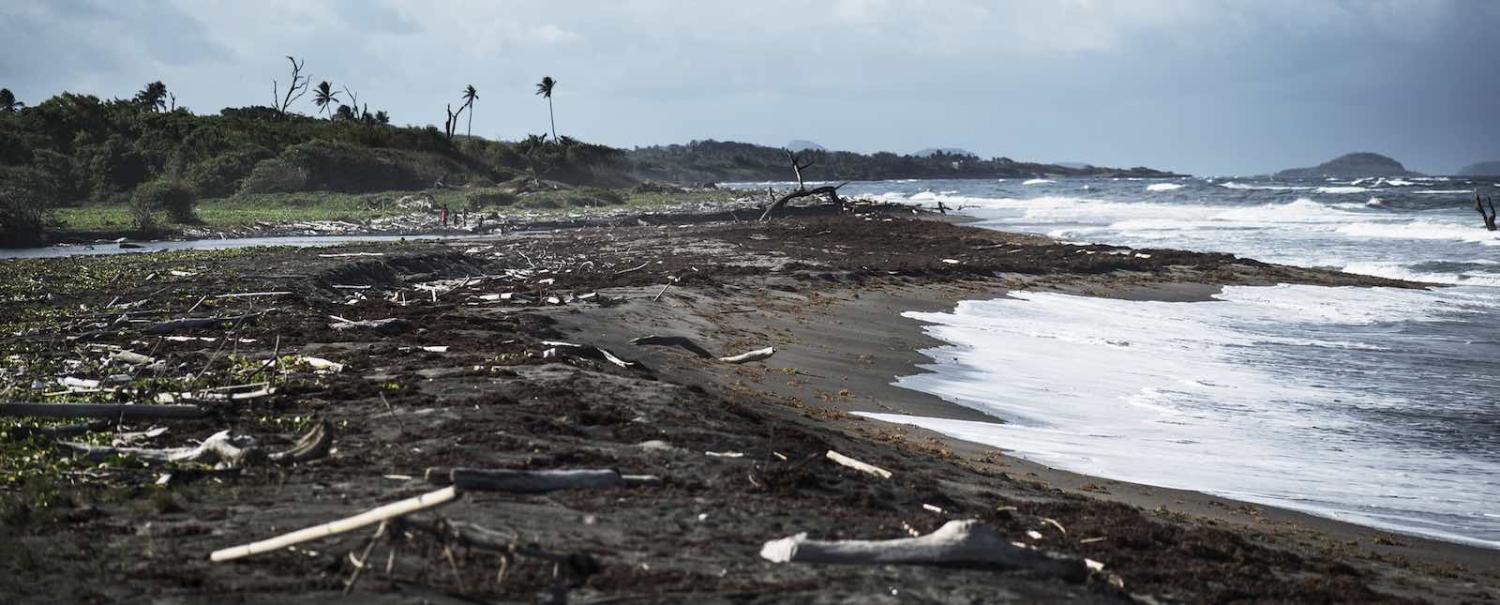Imagine living on a low–lying atoll island in the Pacific and having just survived a severe cyclone. Your island is in ruins and you have lost everything. Humanitarian help is insufficient, your children need urgent medical care, but hospitals are not functioning, and your only hope is to join relatives in a neighbouring country.
Or imagine another kind of disaster that could befall any coastal settlement, in a nation rich or poor. Erosion is eating away land and salinization puts drinking water in ever-shorter supply.
If you had the means and the pressure was enough, wouldn’t you consider moving?
The Global Compact on Migration represents a significant breakthrough, expressly recognising that climate change, disasters and environmental degradation can drive people to leave their homes.
Such scenarios are a reality each year for people from places as distant as the tidal basins of Louisiana in the US to islands of the Philippines, who are displaced by the impacts of disasters, climate change and environmental degradation. Most are displaced within their own countries, but some have to cross international borders to find assistance and protection.
We don’t know the exact numbers of people who move. But we do know that international law doesn’t grant them a right to enter or stay in another country.
In December, the world’s governments will be asked to adopt the Global Compact for Safe, Orderly and Regular Migration. The US withdrew from the process early on, and Hungary has signalled it will not sign up. Australia has also murmured that it may refuse to take part. This is despite the fact that the Compact does not impose new legal obligations, but seeks to foster better international cooperation on migration.
In one area, at least, the Compact represents a significant breakthrough: it expressly recognises that climate change, disasters and environmental degradation can drive people to leave their homes. While the Compact doesn’t create new legal entitlements per se, it invites governments to consider creating new visa categories and other forms of assistance for people forced to escape the impacts of floods, earthquakes, droughts, and rising sea levels.
It’s not the first time that governments have tried to deal with these issues. The Platform on Disaster Displacement, and its predecessor, the Nansen Initiative on Disaster-Induced Cross-Border Displacement, laid the groundwork. The Global Compact picks up these past recommendations and cements them in a global instrument aimed at enhancing cooperation on all dimensions of international migration. Symbolically, the only thematic area with its own sub–title is “[n]atural disasters, the adverse effects of climate change, and environmental degradation”, thanks to a compelling, eleventh–hour intervention by Pacific Island States.
The Compact sets out key areas for cooperation to improve information–sharing between governments to better understand how and why people move away from the effects of disasters, climate change and environmental degradation, and to ensure those who flee have access to humanitarian assistance and respect for their rights. The Compact also calls on governments to develop adaptation and resilience strategies, which may include migration, and to factor in the potential for displacement when devising disaster preparedness strategies, for both sudden– and slow–onset disasters.
Another part of the Compact urges governments to create more flexibility in their regular migration programs. Humanitarian visas, temporary work permits and private sponsorship schemes, for instance, could be made available for people displaced by sudden–onset disasters. For slower–onset predicaments, other visa options, and even planned relocations, could be appropriate.
The Compact also reaffirms existing law that governments must not return migrants to situations of irreparable harm, and they must respect their human rights. Together, these provisions outline a vision of what needs to be done, and some concrete steps to achieve it.
The Global Compact is not a treaty, however. It does not create any new legal obligations. Translating the Compact’s moral commitments into reality will likely be a challenge. Even so, the inclusion of such detailed commitments in an instrument drafted by governments, for governments, is significant.
Clearly, governments recognise that the impacts of disasters, climate change and environmental degradation will continue to displace people, and that evidence–based strategies are needed to avert and address that movement. Furthermore, progress checks are built in: the Compact provides for a high–level “International Migration Review Forum” every four years, and interim regional reviews. This creates a unique framework to build consensus among countries on disasters, climate change and human mobility in the years and decades to come.
The Global Compact puts the issue of disaster and climate–change related movement squarely on the international agenda. That alone is a real breakthrough. However, the true test will be whether governments take concrete steps to put their promises into action, and in that regard, this is just the beginning of a long and complex process.
The authors will appear at Good evidence, bad politics, a talk about overcoming the noise in climate change and migration policy, in Sydney on 23 August.

